Usually, when you notice changes in your fingernails or toenails, your first instinct is to run to the pharmacy to buy antifungal ointment. However, the reasons leading to such changes can be completely different, moreover, non-fungal diseases of the fingernails or toenails sometimes only serve as symptoms of other destructive processes in the body. body.
Causes of unhealthy nails
Normally, nails should be smooth, uncompressed, and pink in color. If it changes color, shape, becomes brittle and breaks easily, the nail plate moves partially or completely away from the knuckle, this may indicate the presence of the following problems:
- improper fingernail and toenail care;
- failure to comply with hygiene rules;
- the presence of infectious or parasitic diseases in the body;
- injury;
- frequent destructive effects of harmful substances;
- a birth defect that may only manifest over time;
- diseases of organ systems - cardiovascular, nervous, endocrine;
- the development of a low-quality tumor.
Additionally, nails are also subject to age-related changes. As they age, they can turn yellow and become hard or brittle.
Description of diseases
Concomitant diseases of the fingernails and toenails are quite rare, usually affecting the nails of the upper limbs.
Hippocratic nails
The most distal phalanges of the fingers thicken, the nails become convex and rounded. Hippocrates was the first to describe this phenomenon affecting the hands, which is why it got its name. This is not an independent disease but can appear as symptoms when:
- Emphysema;
- tuberculosis;
- long-term endogenous toxicity;
- disorders of the cardiovascular system;
- cancer, especially in the lungs.
Sometimes Hippocratic nails can be a genetic or congenital condition. In cancer, it develops rapidly over months or weeks; in other cases, the change process can take years.
Scleroderma
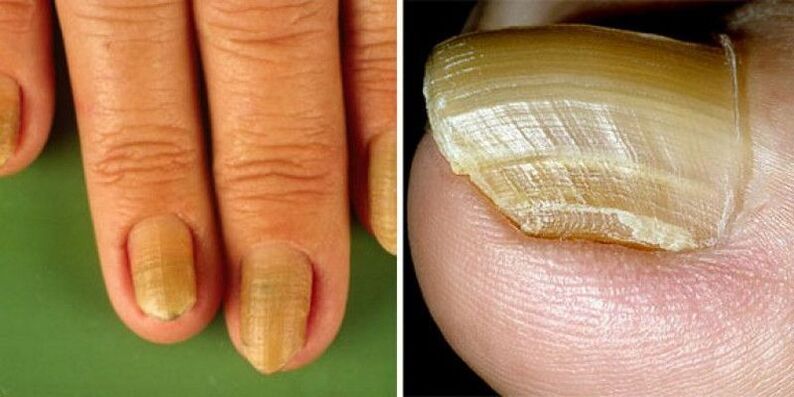
Hypertrophic changes occur in both the arms and legs. The nail hardens, becomes transparent, has a yellow-gray color and over time can peel off the nail bed. This is considered a manifestation of endocrine diseases, although the main cause of scleroderma is still unknown.
nail fungus
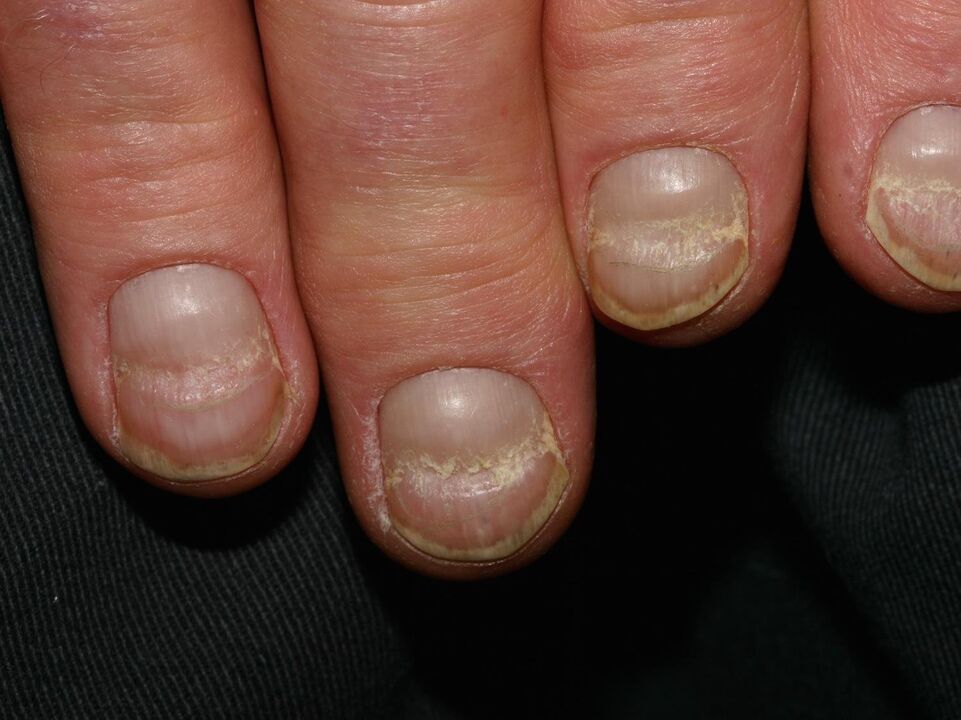
Another name is "bird's claw". It can develop due to frostbite or severe bruising.
Nails become dense and uneven, with an unnatural color ranging from gray-yellow, brown to almost black. In addition, its free edge is bent like that of a bird or twisted into a spiral.
Treatment includes softening the nail surface with salicylic patches or ointment; In severe cases, it may be shaved off or surgically removed.
Onyhauxis
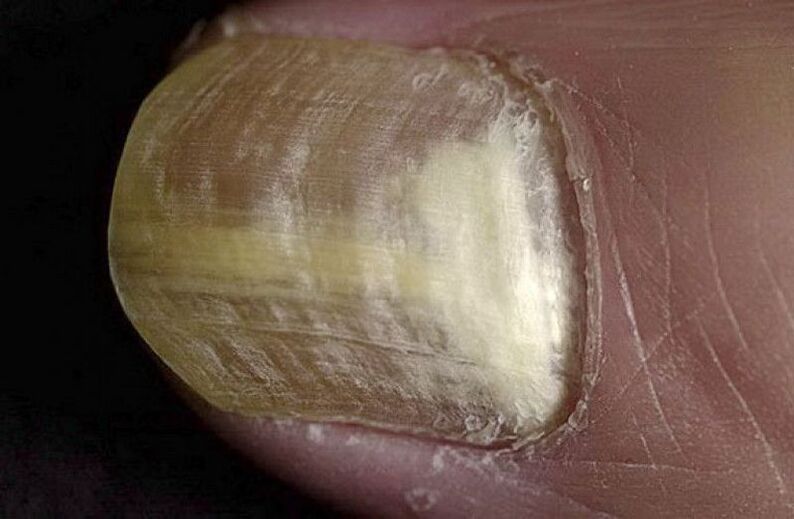
Overgrowth of the cornea under the nail, accompanied by darkening of the nail and inflammation of the nail fold. It affects 1-2 fingers, in rare severe cases it can be observed in all fingers and toes. Often manifested as a consequence of insufficient nail nutrition in diseases such as:
- diabetes;
- varicose veins;
- atherosclerosis of the lower extremities;
- elephant disease.
It can also be caused by trauma or poor quality manicure, sometimes onychauxis warns the body of a lack of certain vitamins and minerals. For correction, drugs that thin and activate blood circulation are prescribed, in case of vitamin deficiency, the menu is supplemented with essential nutrients and multivitamins.
nail fungus
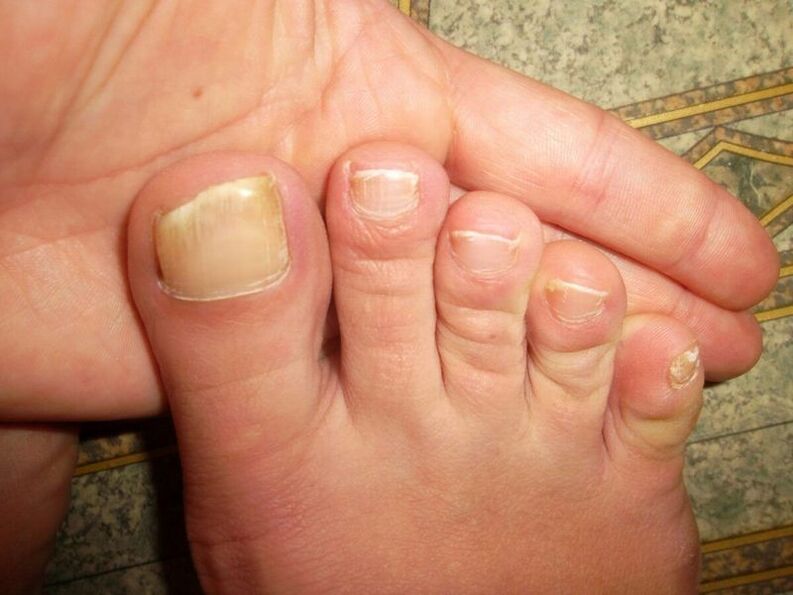
Sometimes accompanied by fungal or bacterial diseases of the fingernails and toenails, often due to mechanical damage or frequent nail biting (onychomycosis). The nail bed becomes inflamed, the nail bed darkens and falls off completely after a short time. This happens both from the free edge and from the inside, depending on the cause of the disease.
Treatment is aimed at improving blood circulation in the painful finger through massage, vitamins and medications. If onychomycosis is of infectious origin, the disease that caused it will be treated accordingly. In addition, they try to protect the exposed nail from fungus and bacteria, otherwise the affected nail will never grow back.
Beau's transverse grooves (Beau-Reil lines)

They appear due to inhibition of the nail growth zone due to metabolic disorders, trauma or unsuccessful manicure and often appear in children as a reaction to viral infections. Depending on the progression of the disease, there may be one or more spots that make the nail look wavy (see photo above).
Bo's line looks like an arc extending across the entire nail surface from one side roller to the other. Its depth can reach 1 mm and depends directly on the severity of the disease. In difficult cases, the groove can tighten the nail so much that its free edge no longer receives enough nutrition, gradually atrophies and peels off from the finger.
After eliminating the factor that causes the appearance of Boron lines, the defects on the nails will disappear over time.
Vertical groove
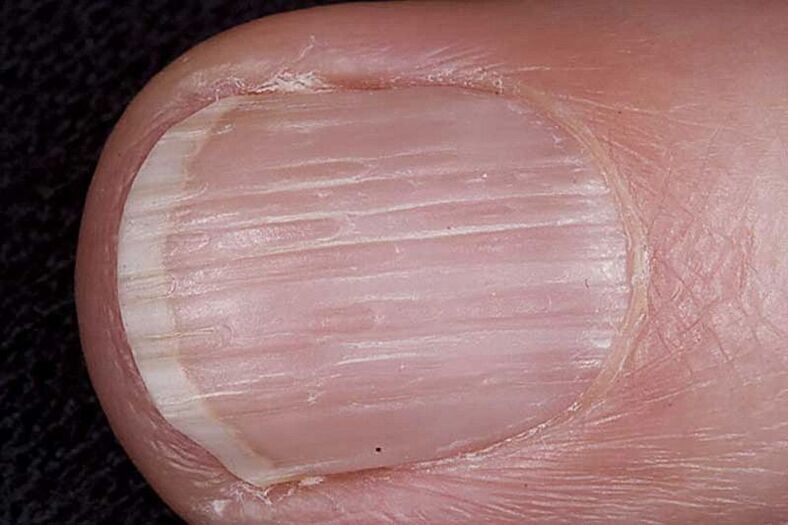
They are also called vertical. Possible reasons for their appearance:
- age-related changes;
- diseases of the nervous system;
- Psoriasis;
- spinal cord injury;
- Gout;
- defects in the functioning of the intestines or pancreas;
- rheumatoid arthritis;
- flat lichen;
- diseases of the cardiovascular system;
- damage to the base of the nail plate;
- iron and vitamin B12 deficiency.
After eliminating the cause, the nail will return to its original shape. During treatment or with age-related changes, to improve appearance, longitudinal grooves can be hidden under a special layer of varnish.
Leukemia
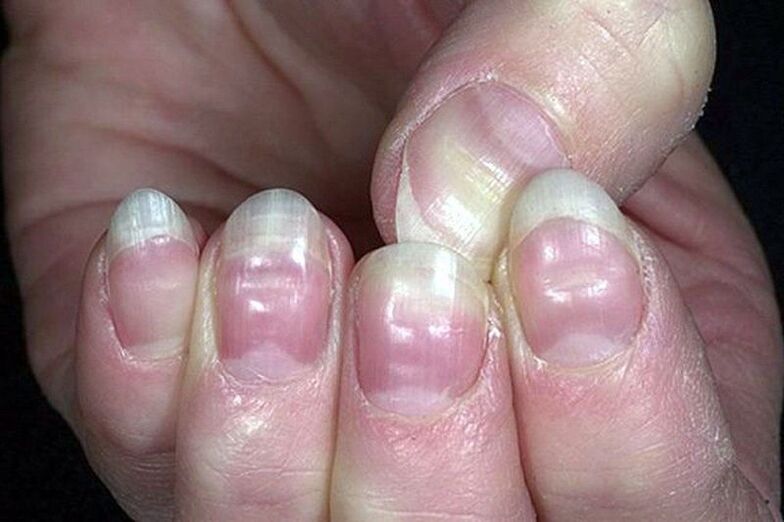
White spots appear on the nails. Their shape, number and location vary according to different dysfunctions of the body. The appearance of spots on the nails indicates the presence of the following problems:
- lack of protein;
- lack of vitamins (especially C, E, A) and trace elements (calcium, zinc, iron);
- mushroom;
- metabolic disorders in the body;
- heavy load on the nervous system: stress, depression, anxiety;
- intestinal problems;
- frequent contact with household chemicals, poor quality varnishes;
- disorders of the cardiovascular system;
- kidney disease;
- skin disease.
If there is no suspicion of disease, then this defect can be corrected independently. It is enough to establish a schedule for rest and work, supplement the diet with foods with the necessary nutrients and wear gloves when exposed to household chemicals.
Nail dystrophy
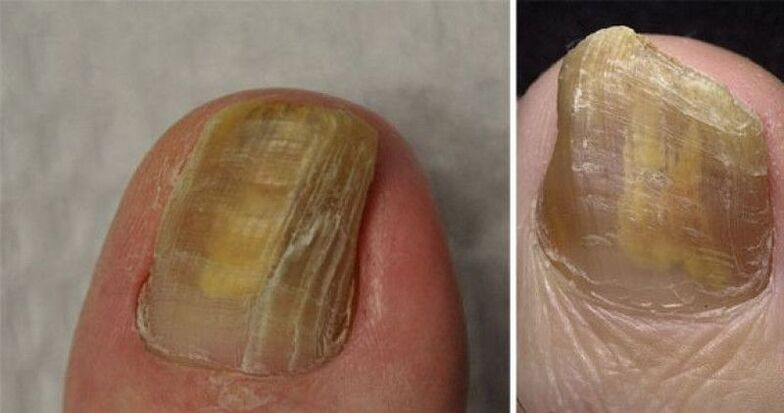
Changes occur in the periungual folds, nail plate, and bed. The nail becomes less transparent, its thickness changes and the growth rate slows down. Longitudinal grooves may also appear and the color may change to gray-yellow. The causes of this nail disease can be:
- mycosis;
- injury;
- skin diseases (psoriasis, eczema, lichen planus);
- vitamin deficiency;
- chronic diseases of the endocrine system;
- heart and lung problems;
- Interact with alkalis, acids, chemicals with unprotected hands.
Nail fungus
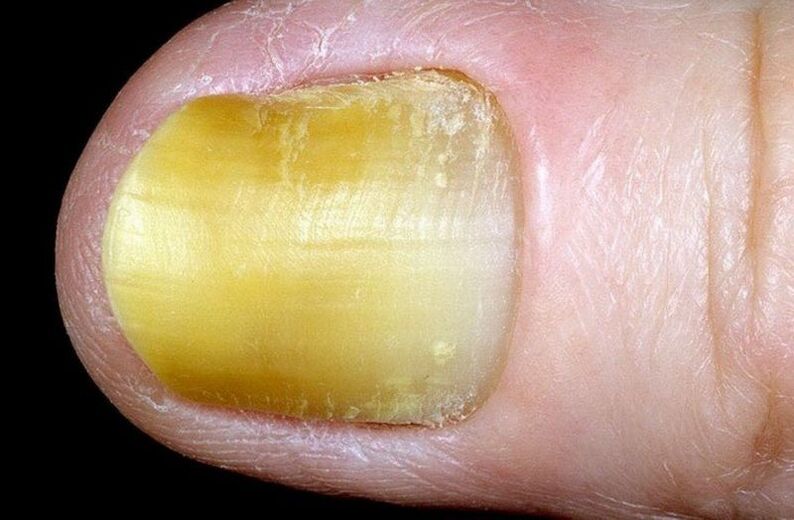
Refers to nail dystrophy. With nail decomposition, a change in the color of the nail plate from yellow to brown is observed. The nail becomes brittle and moves partially or completely from the nail bed. Possible reasons:
- fungal and bacterial infections;
- skin diseases;
- taking antibiotics;
- dysbiosis;
- injury;
- exposure to allergens;
- some chronic diseases.
Ingrown nails
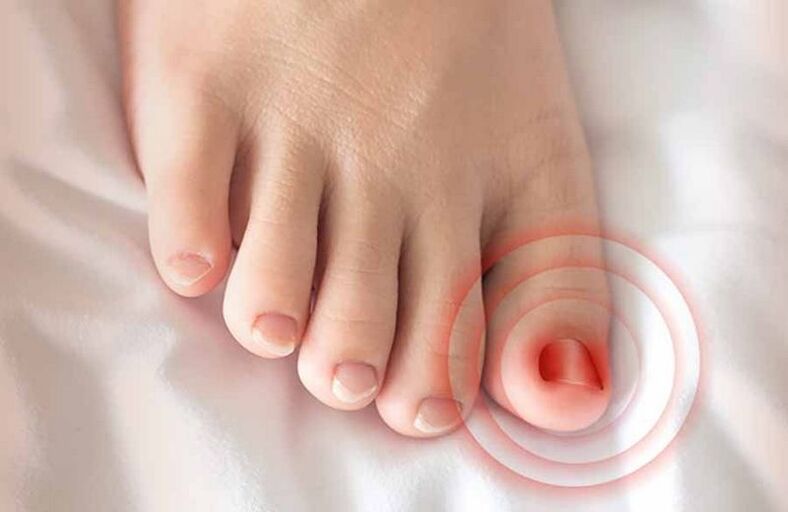
This type of toenail disease occurs mainly due to shoes that are too tight and improper trimming. The nail grows into the lateral cushion, causing finger swelling, pain when walking, and soft tissue inflammation.
In mild cases, you can treat it with foot soaks and softening compresses; In severe cases, only a surgeon can correct an ingrown toenail.
Nail fungus
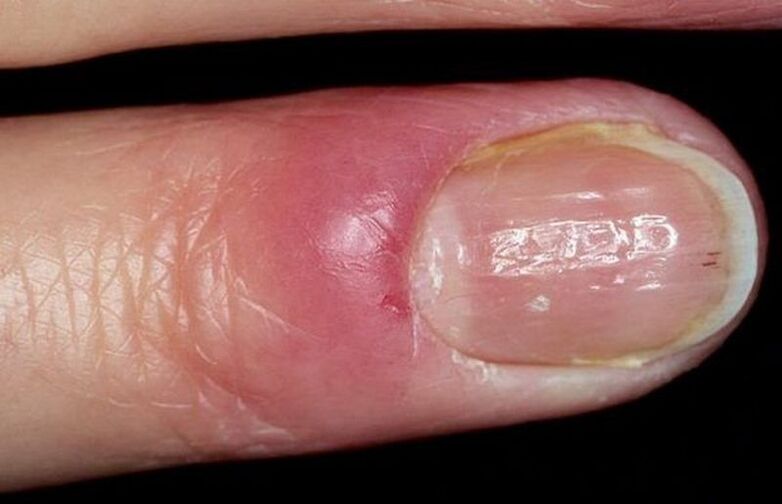
Brittleness and fragility of nails, leading to their separation. Often associated with diseases and conditions that cause impaired microcirculation in the fingers. Harsh diets and frequent exposure to alkaline environments can also be causes. Onychorrhexis is extremely rare in the legs.
incognito
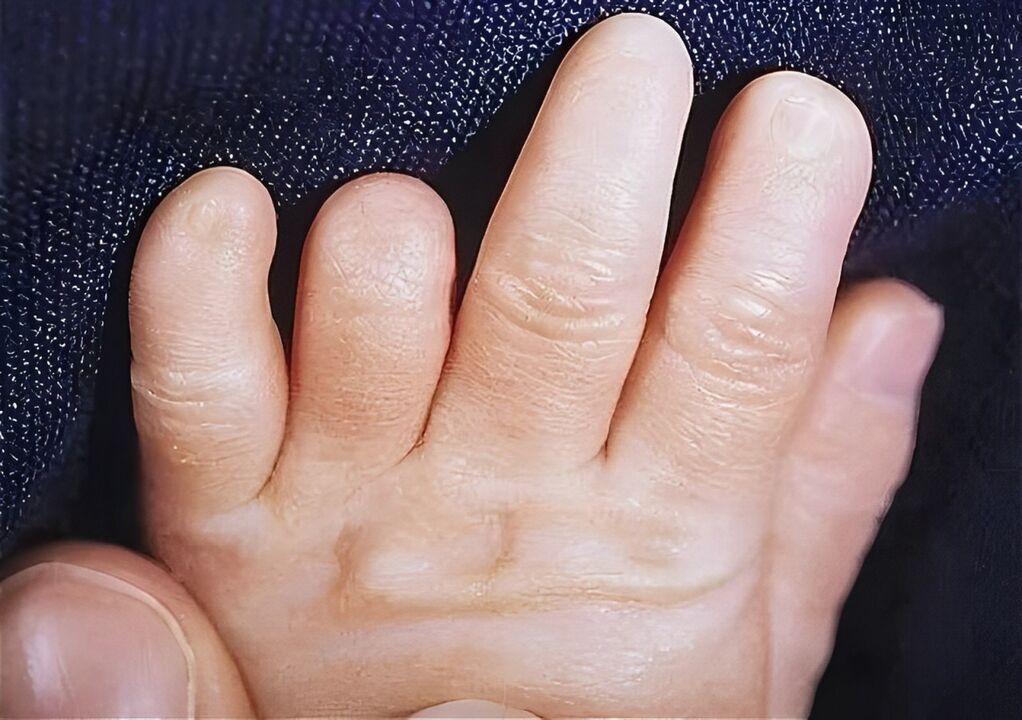
Missing nail plate. It can be congenital or acquired after trauma, diseases of the nervous system of an organic nature or some dermatological diseases.
Koilonychia
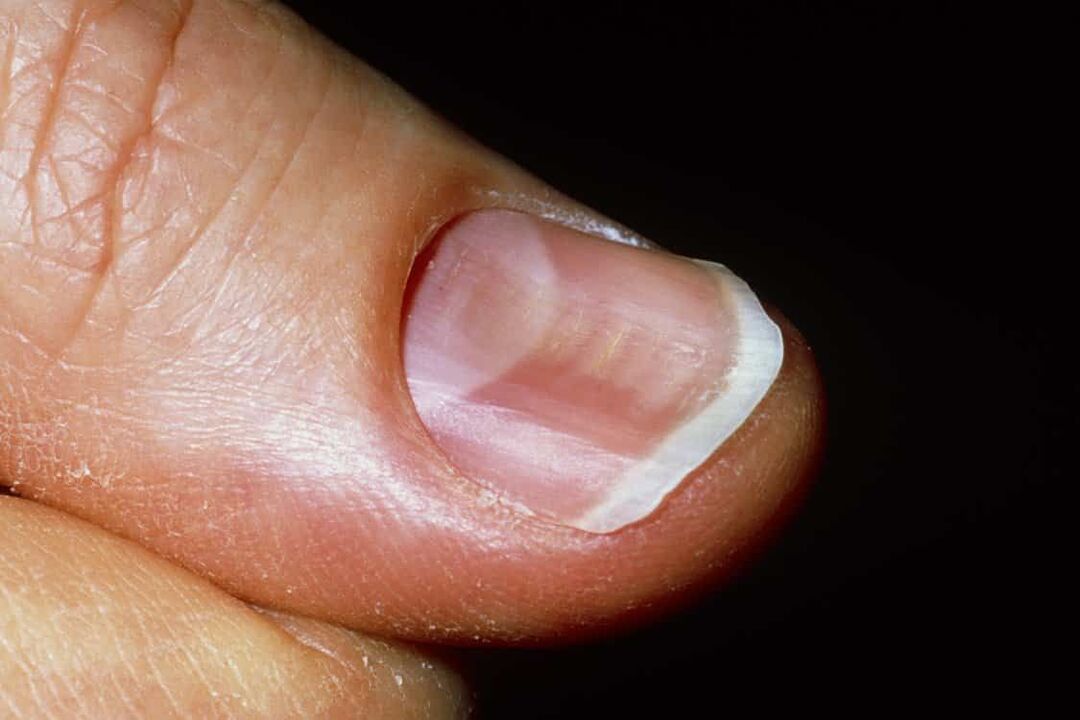
Nails become thinner and concave like a spoon. Possible reasons:
- genetic;
- anemia;
- constant destructive effects of acetone or household chemicals;
- certain infections;
- Improper manicure.
Micronychia
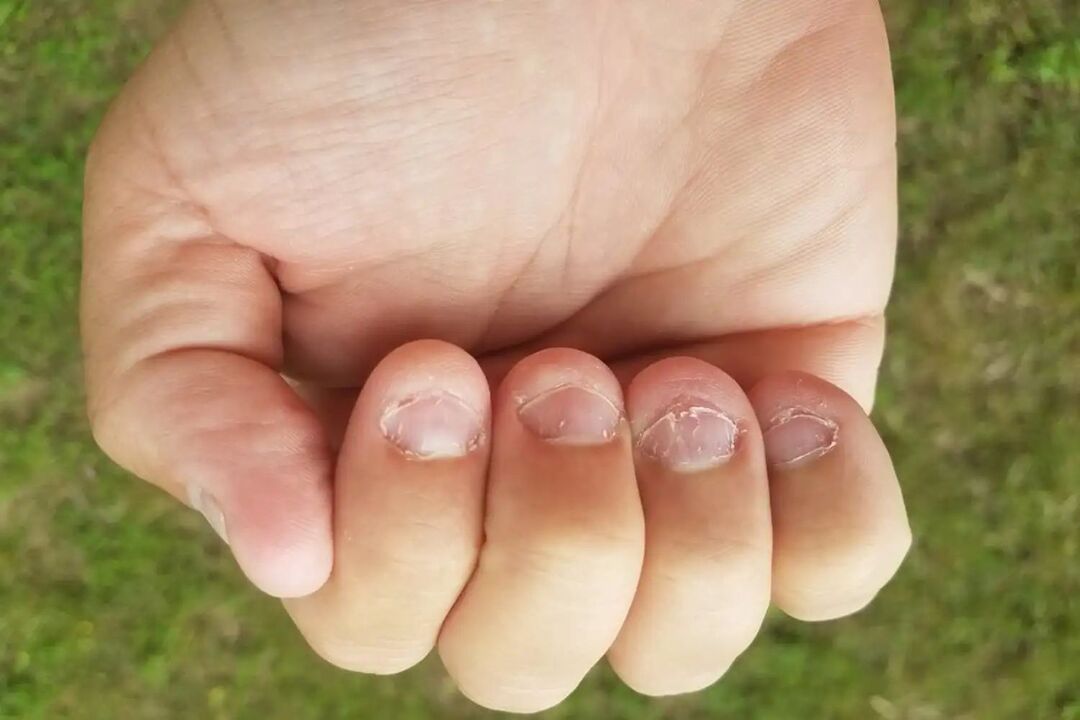
Pathologically short, small nails. It can be congenital or develop due to nail biting. Micronychia also sometimes presents as a symptom of diseases such as:
- progressive scleroderma;
- Trenaunay syndrome;
- flat angioma;
- Actual epilepsy;
- malnourished hands.
Nail fungus

Horizontal separation of the nail plate. It often occurs due to the strong influence of substances in household chemicals and nail decoration products. It often occurs in people working in professions with increased mechanical pressure on the fingers: musicians, printers. Nail fungus also appears when there is a lack of vitamins.
Nail fungus
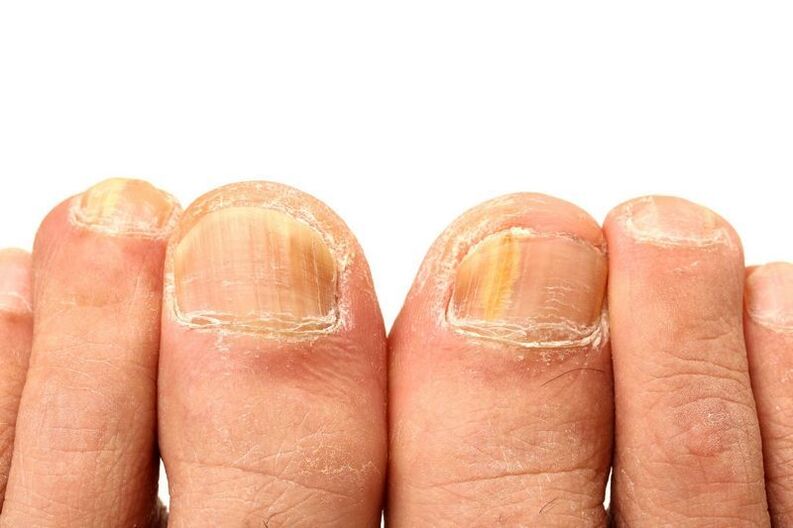
Nail fungus often occurs on the feet and there are quite a few types, so for more effective treatment, it is better to consult a dermatologist.
You can get fungus anywhere, but it needs a warm, moist, and dark environment to grow, which is why it mainly affects the feet. The disease develops over a long period of time, the first symptoms may only appear after a few months.
First, the infected area feels itchy, and the skin begins to dry and peel. Next, the nail itself is affected, the color changes, cracks appear on the surface, and a foul odor appears. If left untreated, over time the fungus will spread throughout the body and cause a variety of complications.
Gapalonychia
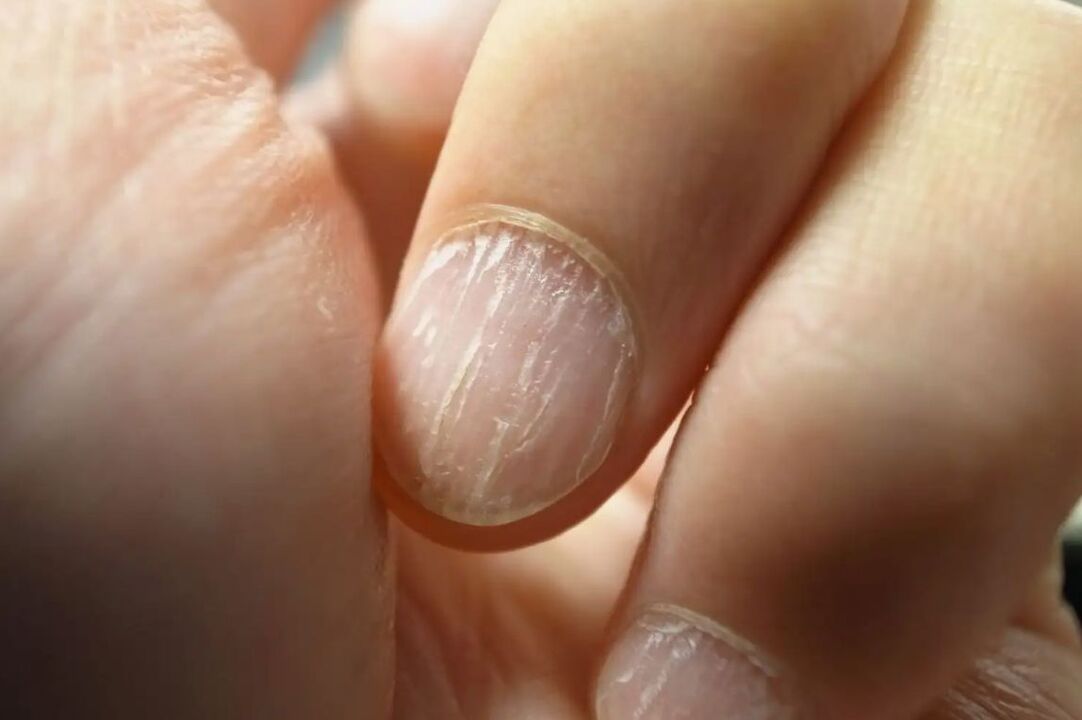
The nail plates become soft, break and separate. It occurs due to diseases of the endocrine system, metabolic disorders in the body and frequent exposure to strong chemicals.
Platonychia
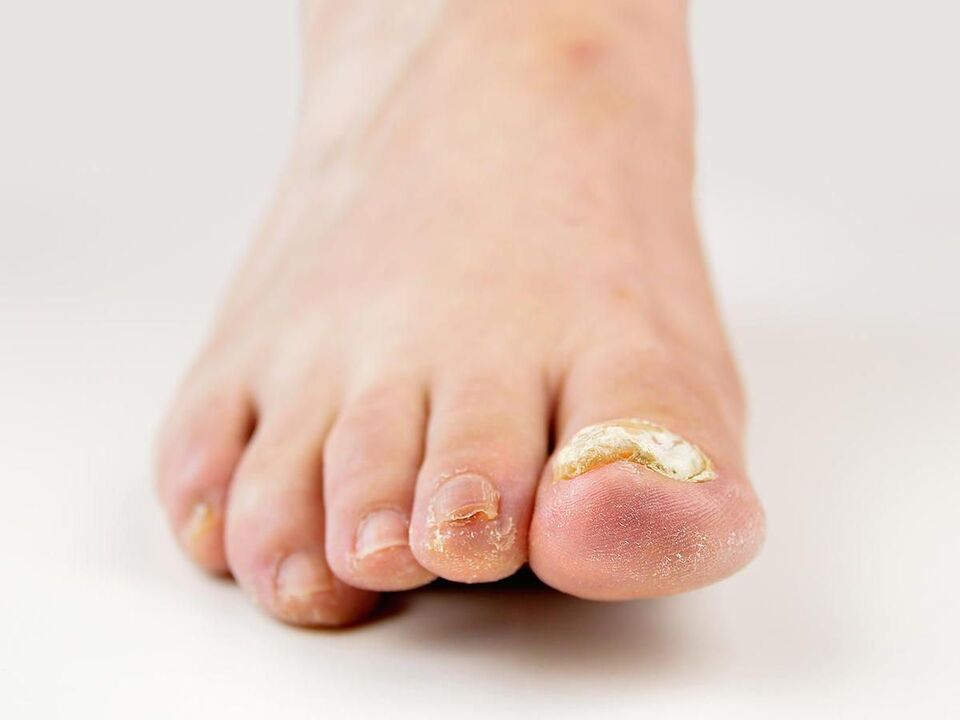
The nail surface is completely flat (see photo). It can be congenital or acquired due to occupational activities. In addition, some chronic inflammatory processes can cause this defect.
Prevent
The following list of simple rules will help you prevent many diseases that can occur in toenails and fingernails.
- You cannot bite your nails.
- File your nails with a glass file or cardboard.
- Manicure should be performed on steamed hands, this reduces the risk of microtrauma and, as a result, wound infection.
- If you use a salon for nail care, make sure the technician disinfects tools before use.
- Dry your hands and feet.
- Your diet should include enough foods that contain vitamins and minerals.
And most importantly, do not be lazy to contact your doctor and undergo additional examinations by specialists. The earlier the disease is detected, the greater the chance of defeating it.



























